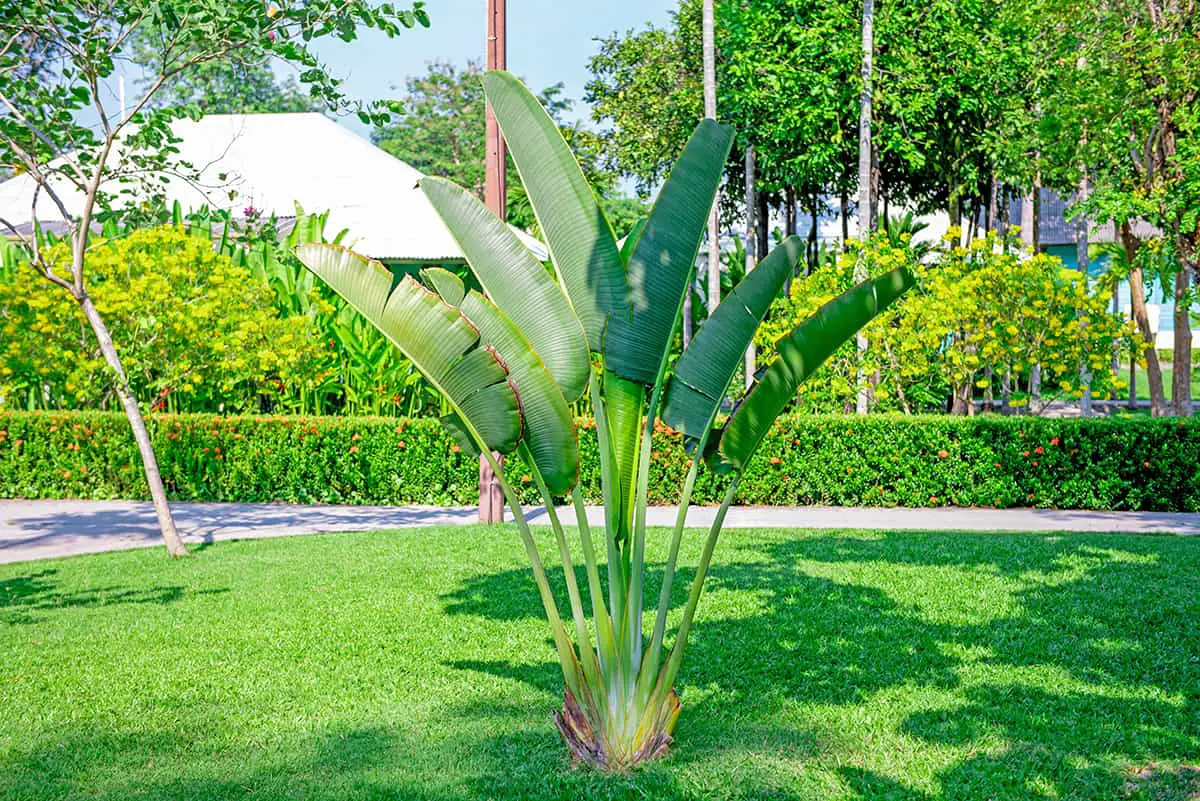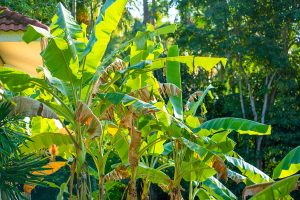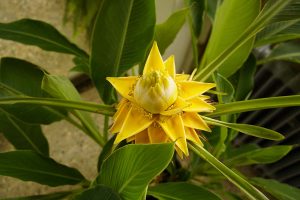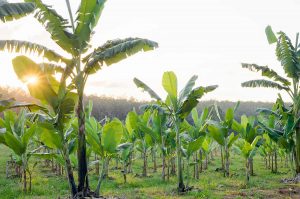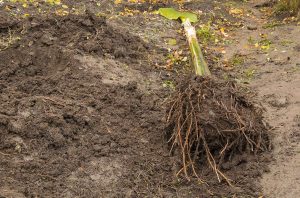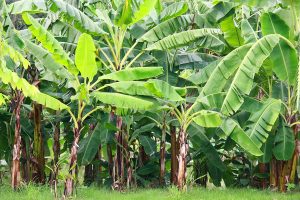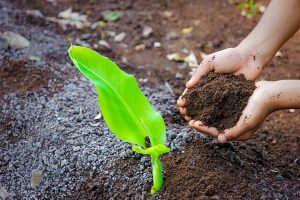There are roughly 70 different species of banana plants which all belong to the Musa genus. This genus is responsible for producing both bananas and plantains.
Though these fruits are economically important across the world, banana plants are not just cultivated for their ability to produce bananas. They also have a striking appearance, with long paddle-like foliage in bright green, which makes them popular as ornamental plants.
Table of Contents
Where do Banana Plants Come From?
Bananas are believed to be native to the Kuk Valley in New Guinea. Archaeologists believe that the first bananas were domesticated by humans in this area in the 8,000 BCE . It is thought that other pockets of banana domestication were in existence around the same time in the tropical areas of the South Pacific and Southeast Asia.
From here, the banana plant has a complex history. They were believed to be growing in parts of eastern Africa around two millennia after their first domestication, and later, around the 1200s, the banana plant reached Europe, North Africa, and the Middle East.
It wasn’t until the 15th and 16th centuries that the banana plant was brought to South America by Portuguese sailors, who established bananas throughout Brazil. From here, banana plants spread throughout America.
Banana plants were not always cultivated for their fruits. In fact, throughout the colonial period, they were planted for the benefits their tall leaves provided other crops. Cacao and coffee plantations depended on partial shade, which was achieved by tactically planting banana plants amongst the crops.
Meanwhile, in Asia, the banana plant was cultivated to be used in the textile trade. The fibers of the banana were developed into fabrics that would be made into clothing or homewares.
Are Banana Plants Hardy?
Banana plants are tropical, and they are mostly associated with growing in warm climates, but there are some varieties that can be grown in low temperatures. Cold hardy banana plants include the Japanese fiber banana and the Darjeeling banana. These species can tolerate freezing climates, though in sub-zero temperatures, you can expect that the foliage of the plant will die back.
In spring, the plant will produce new foliage to replace that which was lost. If you are growing your cold hardy banana plant in a climate that is expected to experience freezing conditions, it is best to winterize the plant by wrapping it in fleece or burlap.
This will help to protect the foliage so that the entire plant doesn’t have to die back to ground level. Remove the textiles from the plant after the freezing weather, and the foliage should have survived. This will mean the plant can continue to grow to greater heights each spring and summer rather than having to start over each year.
Banana plants grow from rhizomes rather than roots, but the rhizomes also benefit from protection in low temperatures. Mulch the soil around the base of the banana plant, or wrap a potted banana plant in fabric to help insulate the rhizomes and prevent them from freezing.
Are Banana Plants Easy to Grow?
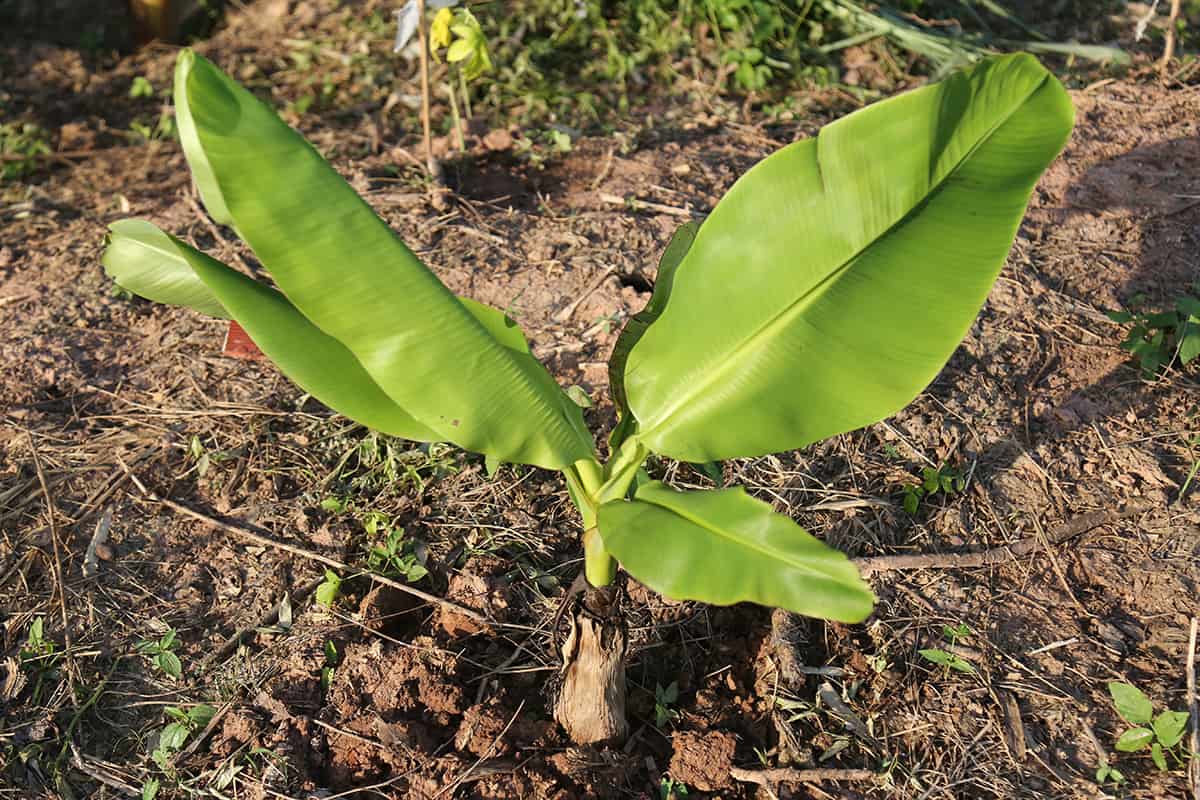
Banana plants are easy to grow if you can get to grips with providing the kind of care they need. They are not the type of plant which will thrive on neglect, so if you are looking for a low-maintenance plant, the banana plant may not be for you.
Banana plants can be grown both outside and indoors as houseplants, but either way, they will have similar requirements. Most banana plants need full sun, as much as 12 hours each day, so they will need to be in a south-facing position and not be shaded by any other plants or structures. They are thirsty plants that cannot tolerate drought, however, they are also prone to root rot.
This means they need to be kept in well-draining soil that is consistently moist. You can expect to need to water a banana houseplant as much as 2 or 3 times a week during the growing season, and if you are growing a banana plant outside in a dry climate, then you should generously water the plant at the roots every evening.
These plants hail from tropical environments where humidity is typically high, and this will need to be replicated at home with water misting spray or a humidifier. Banana plants need nutrient-dense soil, and this should also be frequently topped up with a balanced fertilizer throughout spring and summer.
What is the Difference Between Bananas And Plantains?
In western cultures, bananas and plantains are considered to be two separate types of fruit. The banana has a much higher sugar content than the plantain, which makes it ideal for eating as a raw snack or using in desserts. The plantain is not as sweet and is instead more commonly used in savory dishes. It is not widely used across western cultures, but it is a staple product among Central and South American cuisine. It is often sliced and fried, or it can be mashed as a side dish.
In some parts of the world, bananas and plantains are considered to be two varieties of one fruit, and instead of being differentiated with specific names, bananas are known as ‘dessert bananas, and plantains are known as ‘cooking bananas.
Popular Banana Plant Varieties
Of the 70 species of banana plants in existence, only a handful of them is cultivated for their fruits. Instead, they are grown for their ornamental beauty, both outside and as houseplants. Here we look at some of the more common varieties, some of which produce edible fruits and some which do not.
Japanese fiber banana (Musa basjoo)
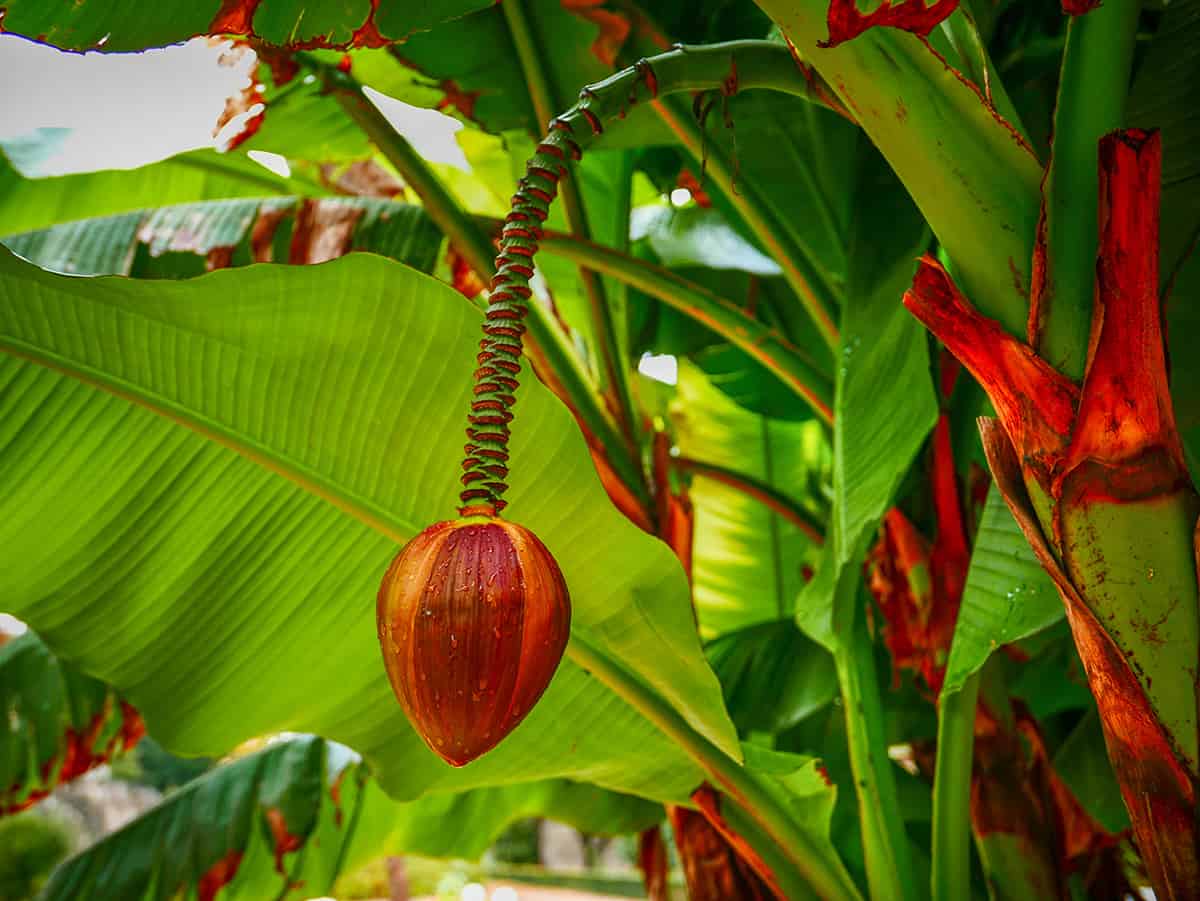
Banana plants are typically not cold, or hardy, and they thrive in tropical climates. However, the Japanese fiber banana plant is known to be one of the most cold hardy species of banana plant in existence. It can survive in freezing temperatures, though you should expect the foliage to sustain severe permanent damage. In spring, the plant will send up lots of new growth to replace the leaves lost in the low temperatures.
The Japanese fiber plant will grow to eventual heights of around 16 feet, with a maximum spread of 8 feet. It produces cream flowers throughout the summer, which are tube-shaped. These develop into small fruits of around 2 inches in length, which are not suitable for eating.
This banana plant thrives in full sun, in moist, well-draining soil.
Pink velvet banana (Musa velutina)
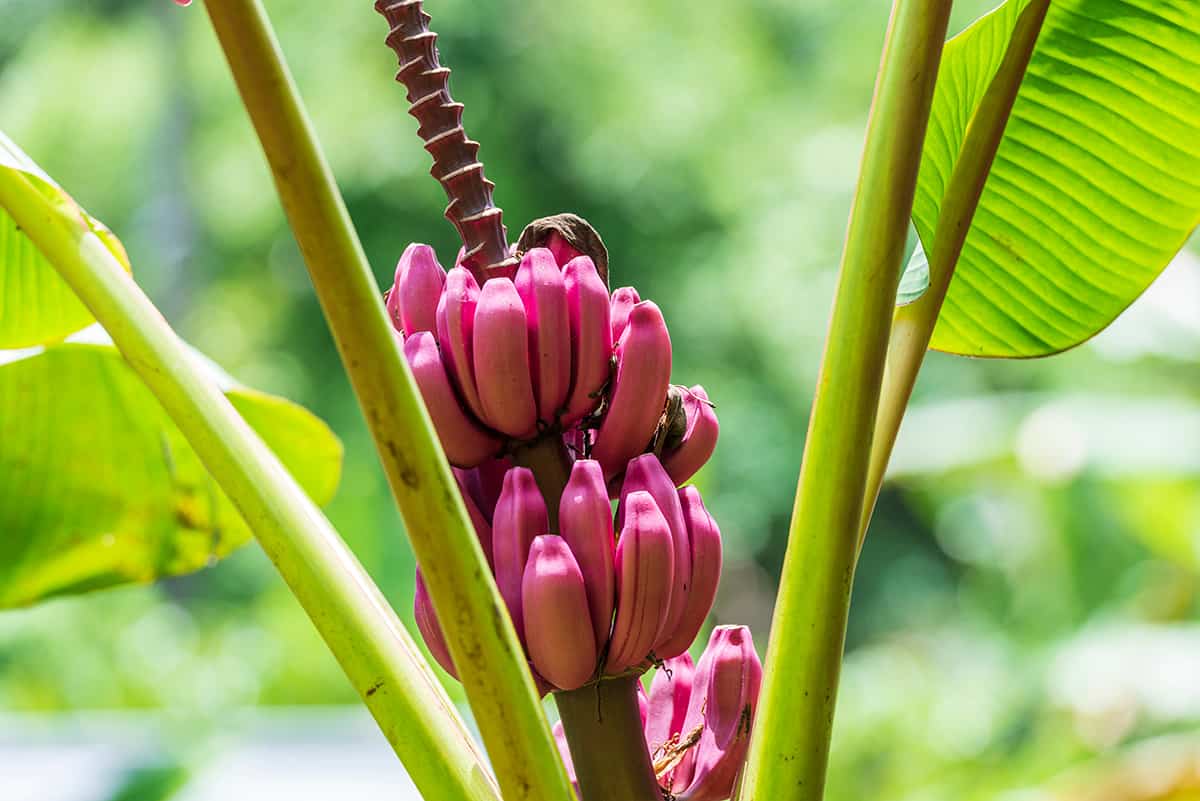
This banana plant is easily identifiable for its bright pink flowers, which are followed by fruits that have vivid pink outer skin. The plant is native to India, and it is a smaller species that will reach a typical height of around 8 feet. Both the blooms and fruits of this plant are very showy and attractive, though, unfortunately, the fruits are not edible.
The paddle-shaped leaves grow on slender stems and are evergreen. This plant also goes by the name of the ‘hairy banana’ because the pink fruits have a fuzzy texture similar to hair. This is also the reason for the common name of ‘pink velvet’, because the fruits are soft to the touch.
Darjeeling banana (Musa sikkimensis)
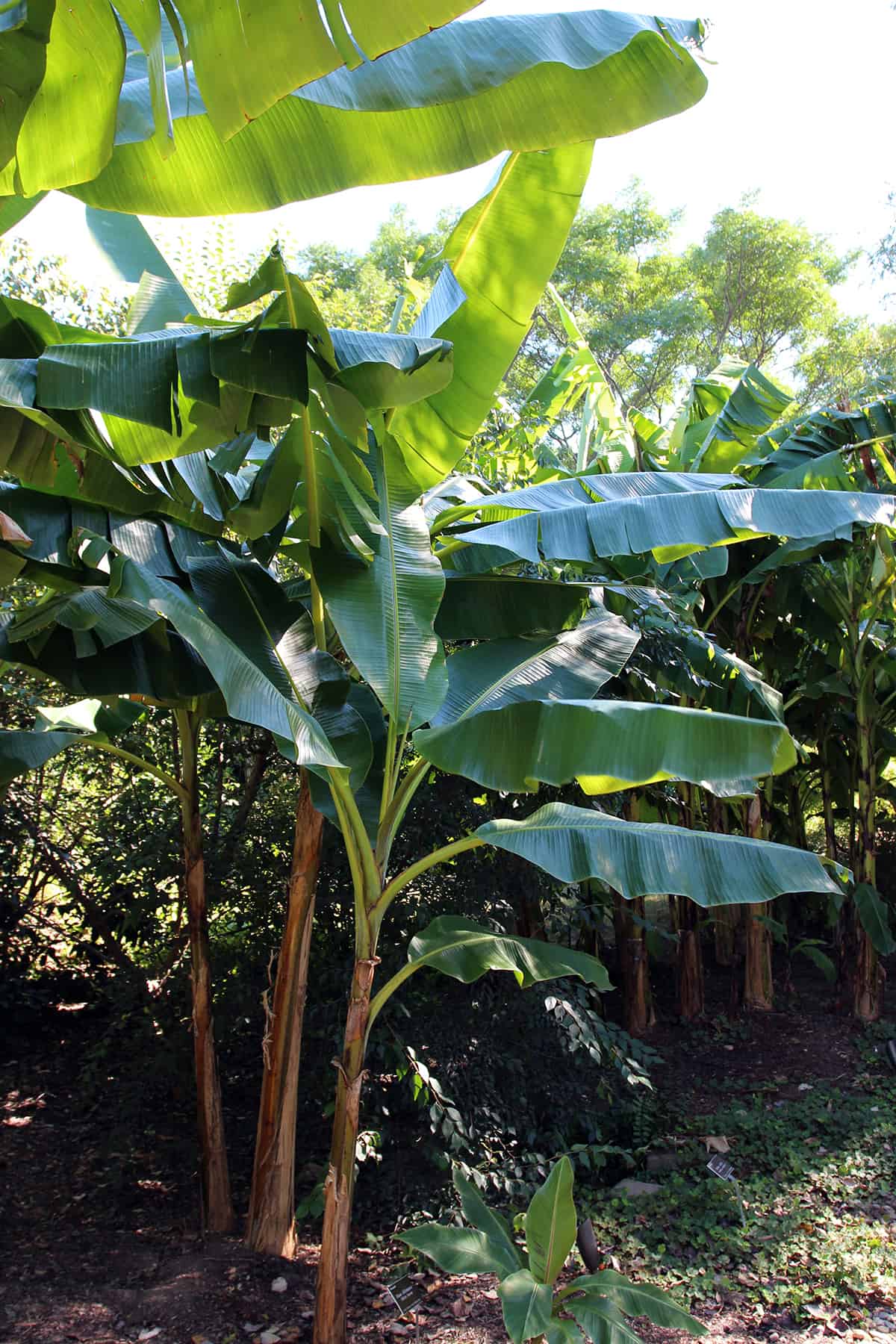
This banana plant is native to the Himalayas, so it is accustomed to surviving cold weather. As such, it performs similarly to the cold hardy Japanese fiber banana (Musa basjoo), being able to sustain itself through periods of freezing and then regenerating in spring.
The Darjeeling banana is favored over the Japanese fiber banana by some cold-temperature growers since the Darjeeling banana plant is typically bigger and more exotic-looking. The ‘Red Tiger’ cultivar is particularly striking, with variegated leaves featuring a green base and streaks of vivid scarlet red. The stems of this plant alone can reach heights of up to 14 feet, while the paddle-shaped leaves add an additional 8 feet to the total height of the plant.
This plant requires full sun to thrive, along with a generous amount of water. It can tolerate partial shade, but any variegation will be more prominent when the plant receives a greater amount of light.
Chinese yellow banana (Musa lasiocarpa)
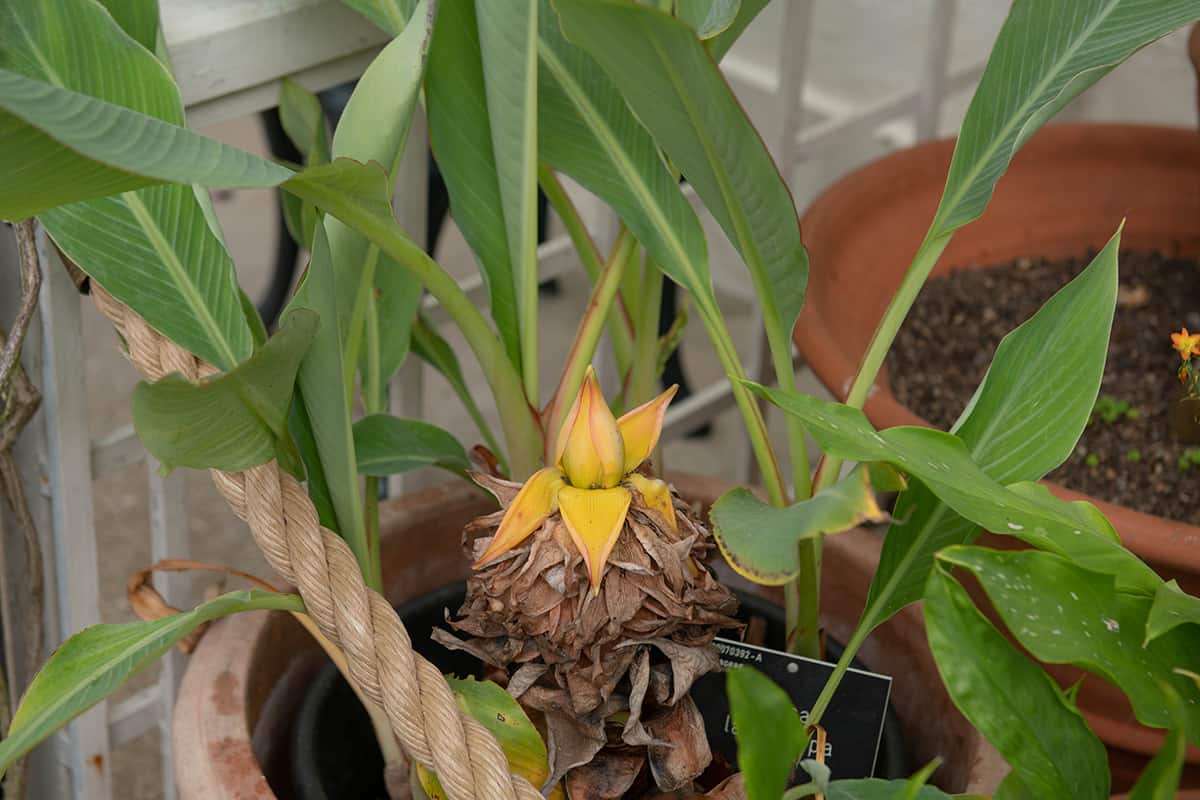
This is a dwarf variety of banana plant which grows to heights of around 3 feet. This makes it an ideal choice for a banana to grow as a houseplant because it won’t outgrow a space, and it also thrives in warm environments such as homes.
This plant grows slowly, taking between 10 and 20 years to reach its full size. It produces unusual waxy, star-shaped flowers in a golden-orange color. These flowers will continue to bloom for a long period of time throughout all of summer and autumn. The flowers do not develop into fruits.
If the Chinese yellow banana plant is grown outdoors, it must be kept in a frost-free climate because it is not a hardy banana species. It is also commonly known as the ‘Chinese dwarf banana’ due to its small stature and the ‘Golden lotus banana’ because of its impressive flowers.
Flowering banana (Musa ornata)
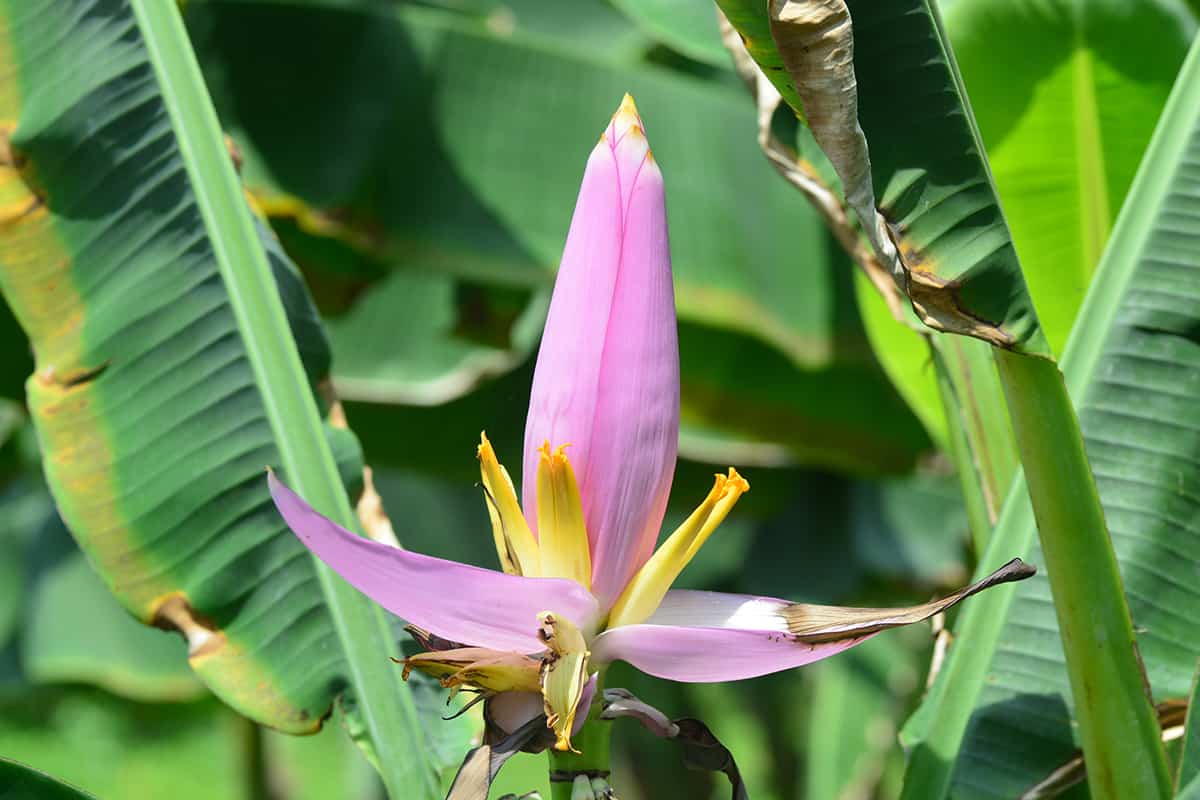
This is a stunning variety of banana plants if you are looking for an ornamental banana species for a tropical garden. It has received the Award of Garden Merit from the Royal Horticultural Society and is considered one of the best types of banana plants to grow outdoors both in the ground or in a pot. The Flowering banana plant is named after its stunning flowers, which bloom atop of vertical spikes emerging from between the foliage.
The showy flowers are golden orange and have vibrant pink bracts. The flowers develop into fruits with yellow-green skin and smooth, creamy flesh. These fruits are edible, but unfortunately, the flesh is filled with black seeds, which makes the fruits too troublesome to prepare. As a result, this species of banana plant is cultivated for its ornamental value.
The Flowering banana plant produces large paddle-like leaves which reach heights of up to 9 feet, with a similar spread of up to 7 feet. The plant requires full sun and well-draining soil, but it is reasonably hardy. It can be grown in USDA hardiness zones 9 to 11.
Scarlet banana (Musa coccinea)
This is another variety of banana plants that is adored for its beauty and has won the Award of Garden Merit from the Royal Horticultural Society. It is smaller than many banana plants, growing to a maximum height of around 3 feet. The leaves are dark green and shaped like paddles, and they are a paler shade on the underside.
The flowers of the Scarlet banana plant complement it perfectly. They come in the form of small yellow flowers surrounded by large, showy, vivid orange-red bracts, which the plant is named after. The flowers are long-lasting and can remain on the plant for up to 2 months at a time. Fruit will develop from the flowers, which are around 2 inches long and have an orange-yellow color. These are not edible and should be removed and discarded.
The compact nature of the Scarlet banana plant makes it well suited for use in small gardens, in pots, and as a houseplant. It is not accustomed to growing in cold temperatures and should only be kept outside in USDA hardiness zones 11 and 12.
Black Thai (Musa balbisiana)
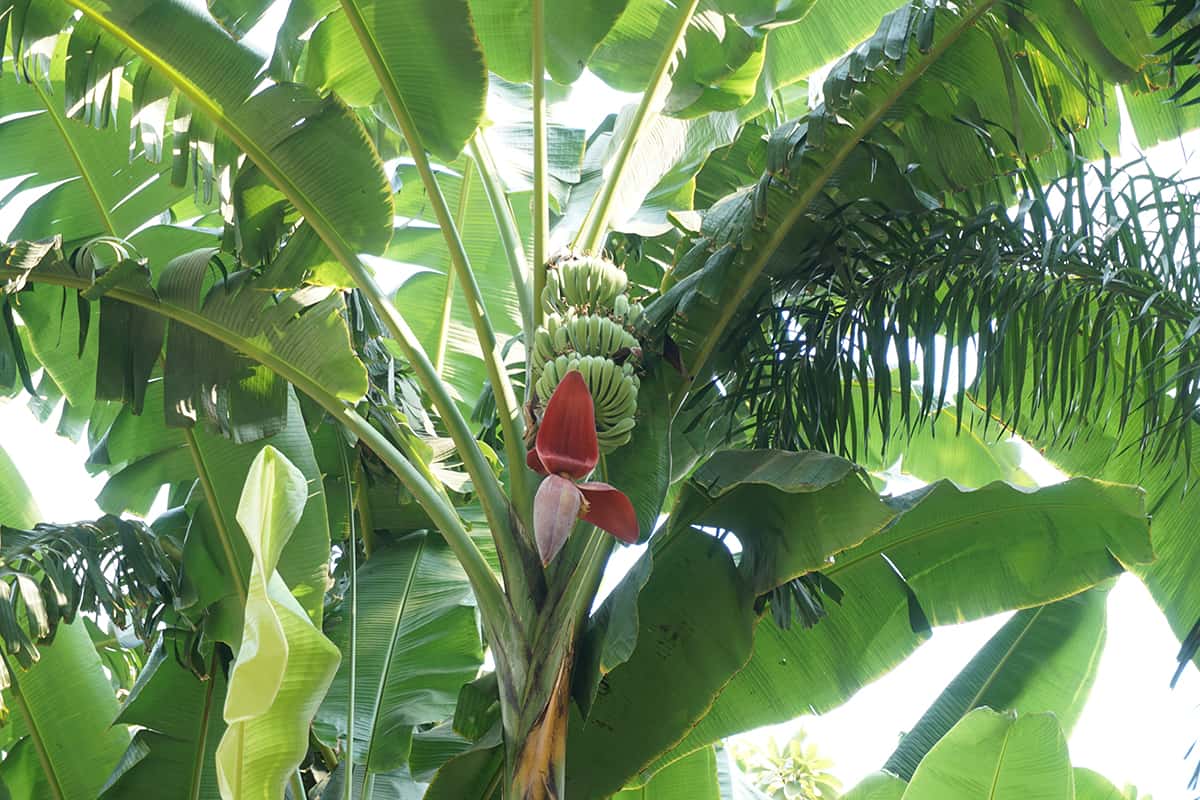
This banana plant is also commonly known as the ‘Black-stemmed banana plant’ and the ‘Plantain plant’. It is native to Eastern Asia, and can be grown in USDA hardiness zones 9- 12, making it a reasonably hardy species. Some of the common names of this plant reference the stems of the leaves, which are an intensely dark shade of purple, so dark in fact that they can appear to be black.
This is one of the taller varieties of banana plants, reaching a maximum height of around 18 feet. It produces clumps of paddle-shaped, upright, evergreen leaves. The flowers of this plant are red, and the fruit that follows has yellow skin. The fruit is edible but is not widely consumed because the flesh contains such a high proportion of seeds.
Banana (Musa acuminata)
This is one of the most commercially important species of banana plants in the world because it is the plant from which the vast majority of banana fruits are cultivated and sold. There are many different cultivars of the Musa acuminata, including:
Grand Nain
The Grand Nain variety is part of the Cavendish group of banana cultivars. The name is a reference to the size of the plant in comparison to the other Cavendish banana plants. Grand Nain plants will be taller than the popular Dwarf Cavendish banana plants, though they are not as big as the Giant Cavendish banana plants.
These bananas and the plants they come from are often referred to as ‘Chiquita bananas’ because the Chiquita Brands International company focuses on selling this type of fruit.
Dwarf Cavendish
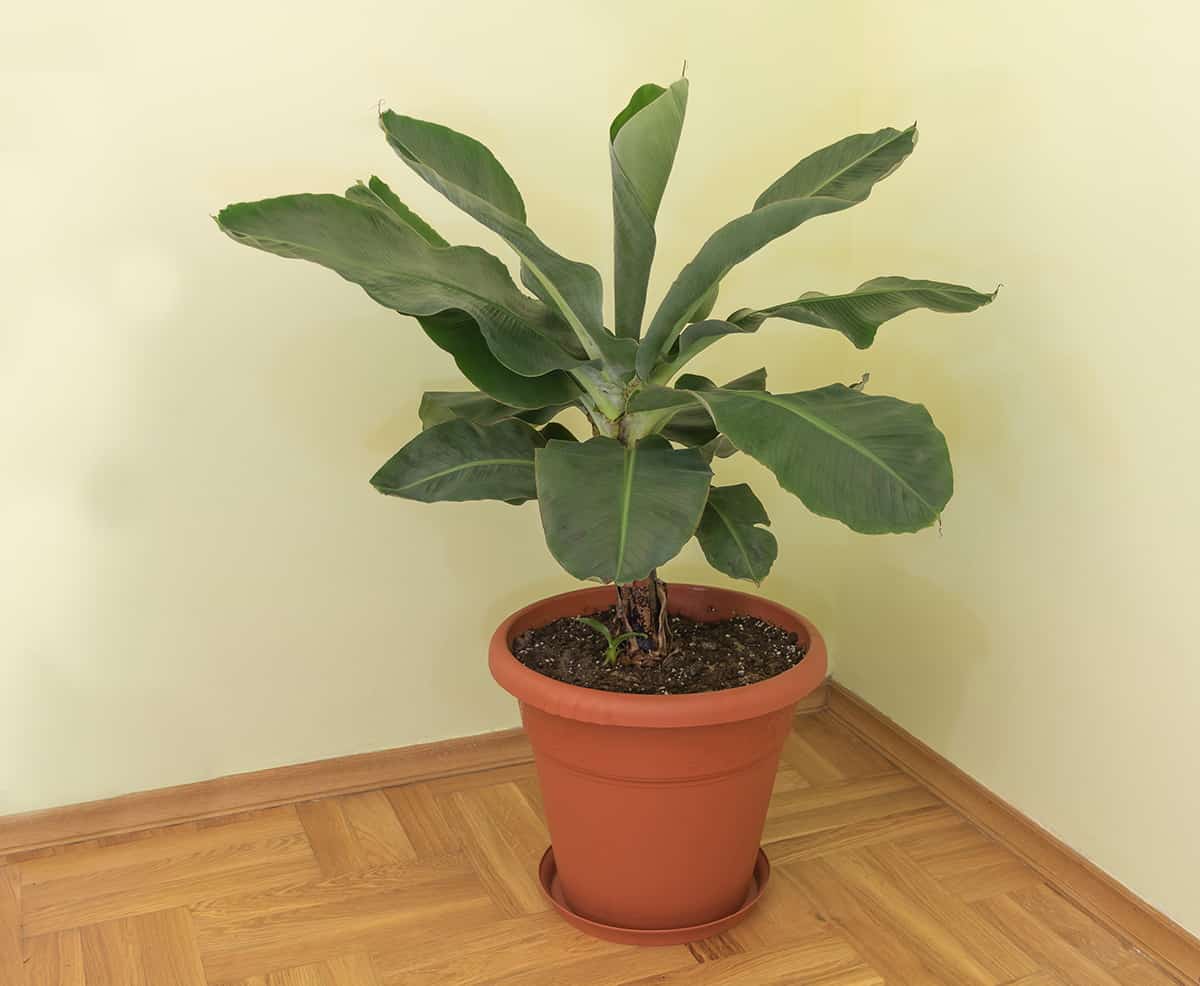
The Dwarf Cavendish cultivar produces bananas which are the most common type you will find in US grocery stores. These fruits are the typical bananas that most people think of when they envision the fruits.
They are sweet and flavorsome and can be eaten raw, in desserts, in smoothies, and in baking. The bananas can be sold unripe with green skins, ripe with yellow skins, and even slightly overripe with brown spotted yellow skin. The Dwarf Cavendish plant grows quickly, which is one of the reasons it is so commercially viable.
When the leaves first develop, they will have purple streaks, but these fade in a short space of time. Each plant will typically produce around 90 bananas.
Gros Michel
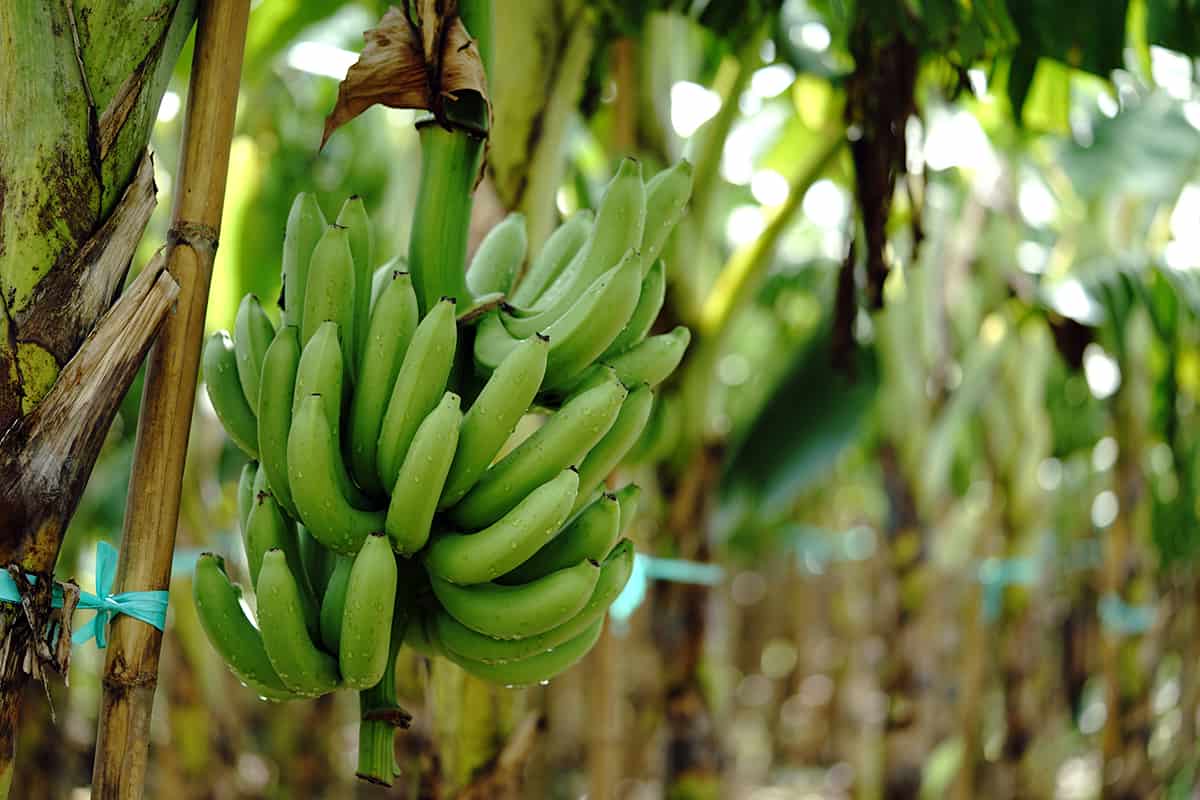
Up until the 1950’s, this cultivar of banana plant was the main commercially grown type, grown for its fruits. The bananas produced by this plant are sweet and heavily scented, and they are creamier than the Cavendish varieties. They also have a thicker peel compared to the Cavendish bananas, which makes them easier to transport and less prone to bruising.
They faced a rapid decline in the 1950’s when a fungal disease spread throughout Central America, wiping out much of the banana plantations. In the following decade, a disease-resistant banana was developed, and this is what we now know as the Cavendish group of banana plants.
Lady Finger
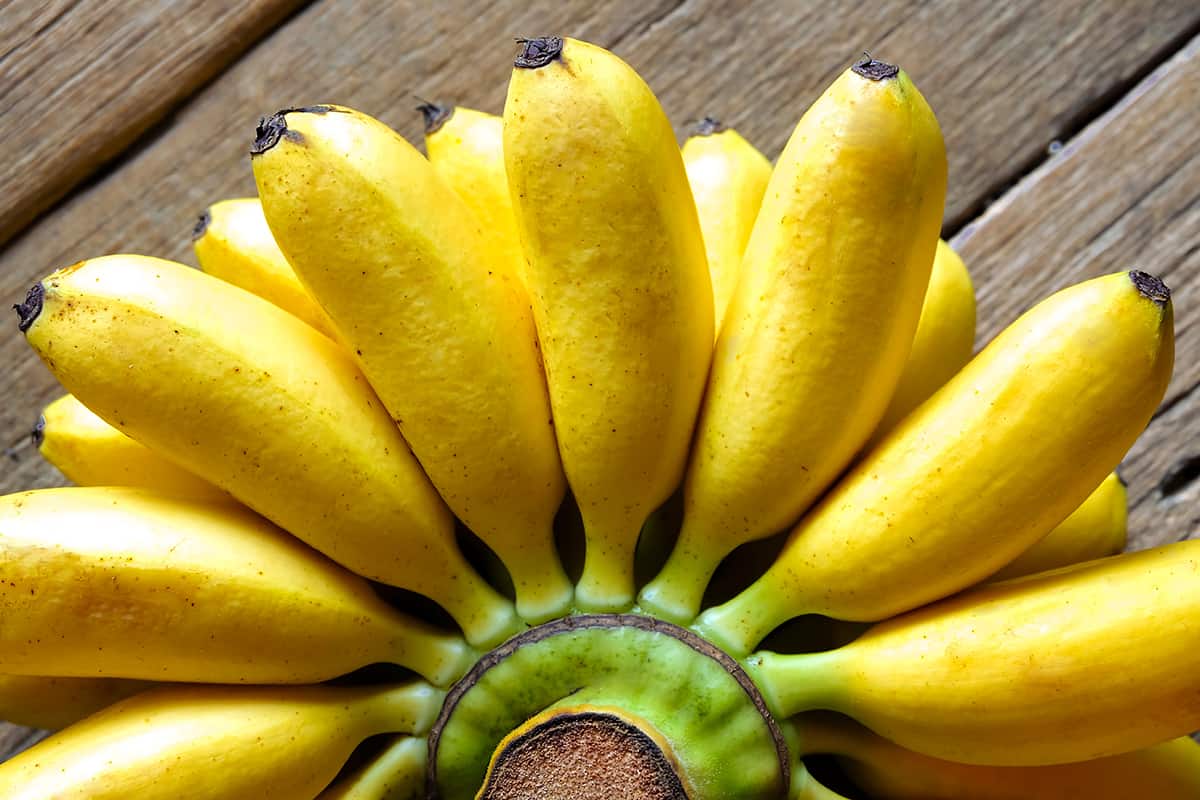
Lady Finger banana plants grow to great heights of around 25 feet. However, the fruits they produce are smaller than the standard bananas you expect to see at grocery stores. Lady Finger bananas are sweeter than the Cavendish varieties, which makes them a good choice for use in desserts.
The bananas are typically around 4 inches long, with thin yellow skins. They are also commonly known as date bananas, fig bananas, and sugar bananas, referencing the fact that these are among the sweetest types of bananas.
A dwarf variety of the Lady Finger banana plant is available and commonly grown as a houseplant. It reaches heights of up to 15 feet.
